The festival of Burgundy tastings (some call it a circus) hits London in January. For some people it is the highlight of the wine year. Importers bombard their customers with invitations to events which overlap, so that some avid fans can attend three or four tastings in a day. And they do. I tend only to go to one these days. This one. I’m no longer in the market for very expensive wines requiring long cellaring, although I’m very much enjoying those I have tucked away.
Andrew and Emma Nielsen’s Le Grappin, Mark Haisma and Jane Eyre were showing their 2018 vintage at Vinoteca City (Cannon Street/Bloomberg Arcade), along with Jérémy Recchione and the Romanian venture of which Mark is a partner, Dagon Wines (formerly Dagon Clan).
Before we hit the wines I think I need to say something about the 2018 vintage in Burgundy. The general view is that it was hot. That cannot be disputed, although most producers will focus on the good news – no hail or frost, a dry summer and fruit in perfect condition at harvest. When you read what consumers are saying the views range from “difficult to judge easily” to “undrinkable”, the latter comment made about the wines of one well known grower on the Côte d’Or. One cynic said it was probably a “best ever Parker vintage”. But the majority considered opinion is that freshness is a quality found in the minority.
However, I only attended this tasting. There’s a reason, of course, well several, but I do feel that all three producers headlining here do produce the kind of wines I appreciate. I was away at the time of their 2017’s tasting last year, and I’m glad I made it yesterday. I was pleasantly surprised. I can agree with the words of a trade professional I know who, after a few qualifying comments, mostly regarding prices, said “some great gear on show, though”. Let us begin.
LE GRAPPIN
Andrew and Emma Nielsen work out of a tiny winery within the walls of Beaune. Their Du Grappin label buys grapes from points south, Beaujolais, Macon and the Rhône. Le Grappin is the main label for their Côte d’Or wines, where they have been lucky to secure long term relationships with the owners of some genuinely under appreciated sites. Jancis has called their wines “pure” and “refined”, and that is indeed what they are. Andrew is an intuitive winemaker, which means he adapts techniques to the vintage. That was important in 2018. I do have an emotional link with this producer. I bought my first pack of Beaune Boucherottes from the (first) 2012 vintage. I don’t buy every year, but that is purely for budgetary reasons, so I have to focus to be 100% objective.

For the 2018 vintage, with no serious damage and loss from hail and frost, there are four white wines produced. Personally I think that due to the Le Grappin style, these wines have been a success. All four are very well delineated and differentiated, which is not always easy in a hot year. Savigny Blanc has the most freshness and acidity, Saint-Aubin “En L’Ebaupin” is a little quieter and restrained but has more depth (it’s often my favourite Le Grappin white). Santenay 1er Cru “Les Gravières Blanc” comes back with a bigger bouquet and has a note of salinity, and finally Beaune Grèves has some sweet fruit and spice. There were six barrels made. I think the first three wines would drink well at three-to-four years, whilst the Beaune needs longer. I actually liked every one of them.
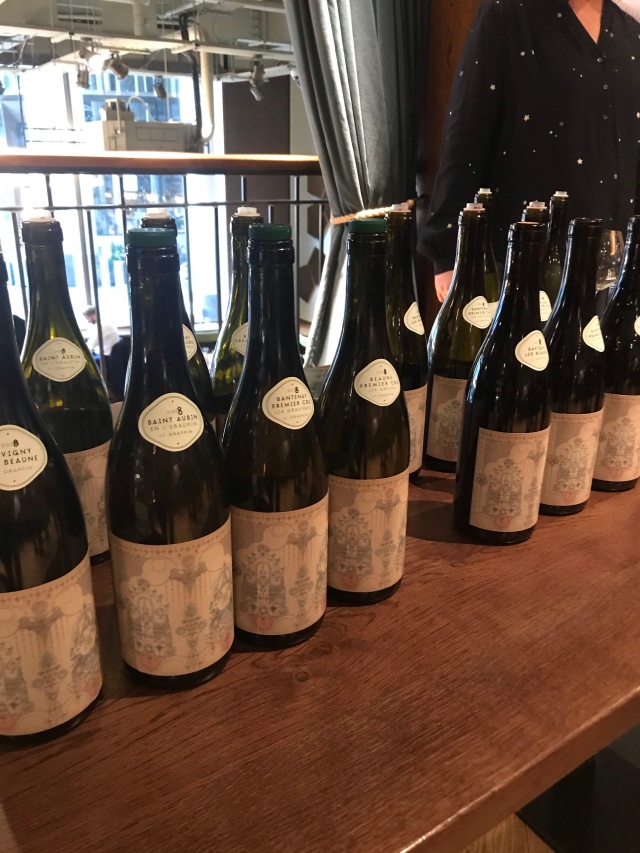
The red cuvées were all made with whole bunches in 2018, and with minimum intervention (so no plunging or punching down) to pull back on extraction. They were all fermented as dry as possible. The Savigny has a vibrant colour, a rich cherry nose, and quite sweet fruit. It is balanced by a grippy freshness. Santenay 1er Cru Gravières is a new wine from the same vineyard as the white equivalent. The vines are between forty and seventy years old, which must be an advantage in cases of heat stress. That said, the wine is quite deep and rounded.
Beaune 1er Cru Boucherottes is on the Pommard side of Beaune, but it doesn’t have the tannin that some Pommards seem to have in 2018 (according to what I have read). The fruit is in the red spectrum and I thought it was quite promising. It will drink early, though not now. I recall Andrew telling me to drink the 2013 Boucherottes before the ’12s, and those ’13s are drinking beautifully now. So I’m not discounting the same progress for this vintage.
I also tasted the two 2018 Aligoté cuvées. These if anything seem to have more acidity than the previous vintage when I finished my last bottles, so I don’t think they will fade swiftly. The “Skin” bottling was made with half-destemmed fruit and half by carbonic fermentation over seven days on skins. The destemmed portion definitely adds complexity. Fleurie Poncié 2018 was also impressive, probably helped by being a very old parcel of bush vines at altitude. A true Chauvet wine, using concrete to good effect too (a 21 day fermentation with a slow start thanks to overnight chilling, in Beaune). It has real freshness of scent and structure. Organic. I did also taste the Côtes du Rhône, pure Grenache, good value and good tout-court, but less my thing, I think.
The only concern for me really here is the prices (between £147 and £190 for six in bond for the Côte d’Or wines), but it should be accepted that Andrew and Emma charge what they have to. Top fruit comes at top prices. Those of us who can regularly purchase fine Burgundy these days is, let’s be honest, limited to an elite. It’s a shame, but a fact of life. I will pick up odd bottles of Le Grappin where I can, and enjoy Du Grappin as well.
JANE EYRE
Of the three Ozgundians Jane might be the least well known in the UK, but some say the most well known in the region itself. Although I know her wines less well than those of the other two, I have come to realise that I have been seriously missing out, if only because my Burgundy budget is now so slender as prices have risen. Jane’s wines cover a wider price spectrum, starting at £105 ex duty/VAT (translating to £145 all in) for her Fleurie right up to £465 (£575 inclusive of duty and VAT) for her Corton Grand Cru. There are a couple of new wines for the 2018 vintage. All are red here.
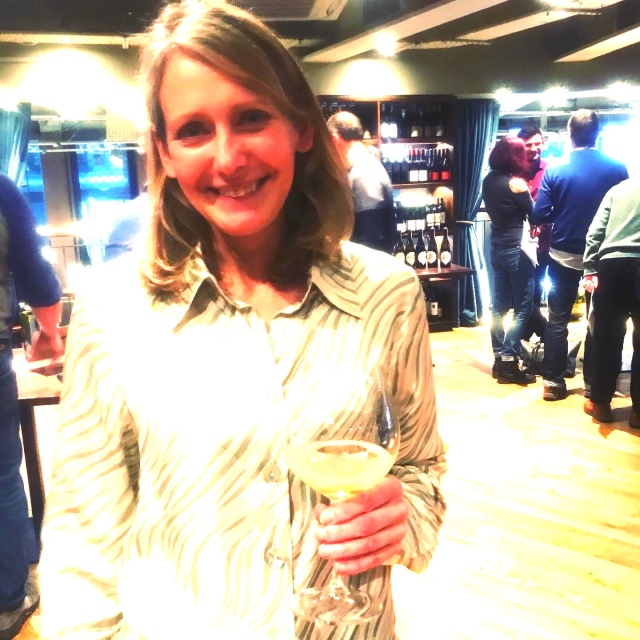
Jane first made Fleurie in 2016. The juice underwent a similar 21-day fermentation as Le Grappin’s in 2018, but with 60% whole bunches. It’s quite dark-fruited and a little smokiness adds interest. Approachable now.
From the Côte we start with Côte de Nuits-Villages from Comblanchien (from two sites, one parcel farmed biodynamically). 100% destemming and one barrel (ie 10% of ten) was new. Elegantly scented, mineral, nice. Unlike some reports, the lesser wines from all the producers here showed no gloopy flabbiness. Gevrey-Chambertin has some oomph, but also brightness. Savigny 1er Cru Aux Vergelesses usually attracts me. It has a bit more weight, roundness and grip. I think it was the first cuvée Jane made back in 2011. Its round fruit makes it appear approachable but give it time.
Santenay Gravières 1er Cru is a new wine, 30% whole bunches and 25% new wood. The fruit is plump and ripe and it’s a bigger wine, for me, than the Savigny. It may drink well in just 4-5 years. Chassagne Montrachet 1er Cru Les Bondues is an very interesting wine. It is effectively a Monopole for Jane as she is the only winemaker to take this patch of 90-year-old biodynamically farmed Pinot Noir vines, which sit amid Chardonnay rows pretty much just over the road from Le Montrachet. The acids are good and the fruit pretty complex. It has that touch of earthiness and textured grip that made me quite a fan of Chassagne reds back in the day, when, not being white, they were cheap as chips.
Jane’s Beaune Premier Cru comes from the famous Cent Vignes, on the Savigny side near the Clos du Roi. Six barrels were made (one new). It has a plump bouquet and you do catch a bit of oak spice, with cherry fruit then something deeper, plummy. The vineyard is farmed biodynamically and no sulphur was added to this cuvée until just a little, two months after the malo.
Gevrey comes back with a 1er Cru, Corbeaux, a site pretty much directly south of, and abutting the gardens of, the village itself. But more importantly, it also abuts the Grand Cru, Mazis Chambertin. It’s relatively closed now but the fruit is exquisite. You also get more complex spicy notes hinted at. There’s more to come here, it needs time.
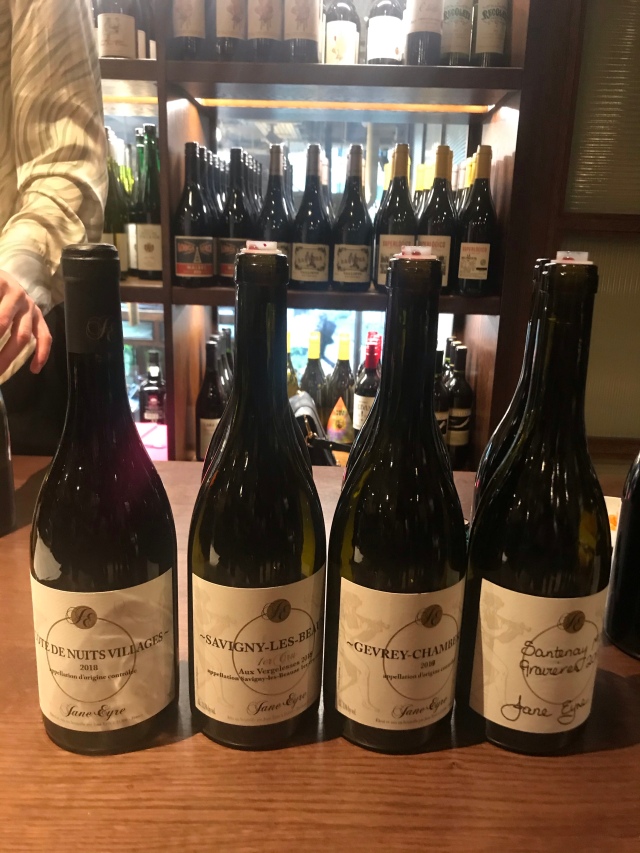
We finish with the Corton Grand Cru 2018. In 2017 this wine was 100% from “Maréchaudes”, but for 2018 just 60% of the grapes were sourced there. The rest of the fruit came from “Renardes” (30%) and “Bressandes” (10%). The bouquet is wonderfully pretty, Jane attributing the aromatics to the “Renardes” fruit. The palate is bigger than the nose leads you to expect. There’s structure but it does retain a nice lightness and elegance. I’d buy some if I could afford to. Ideally I’d go with a mixed case of the red Chassagne, the Savigny, the Cent Vignes and this Corton.
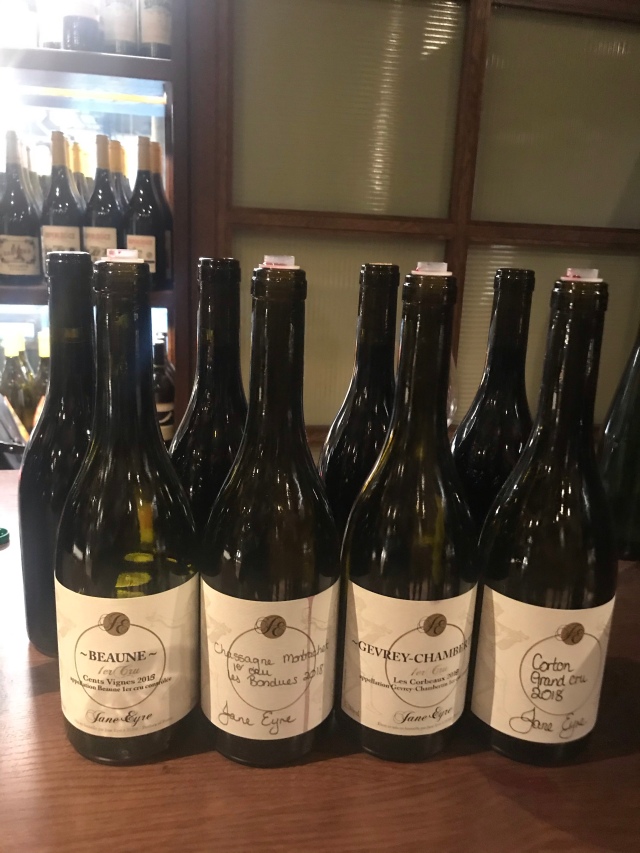
MARK HAISMA
Mark showed a big lineup of wines so I’ll have to restrict any elongated comments to just a few wines, but the range, again, was good and whilst I preferred some wines to others, they are certainly not at all typical of some of the comments surfacing about the vintage in general. But reading what others have said about this particular tasting on wine forums, I don’t think my more positive thoughts are completely atypical.
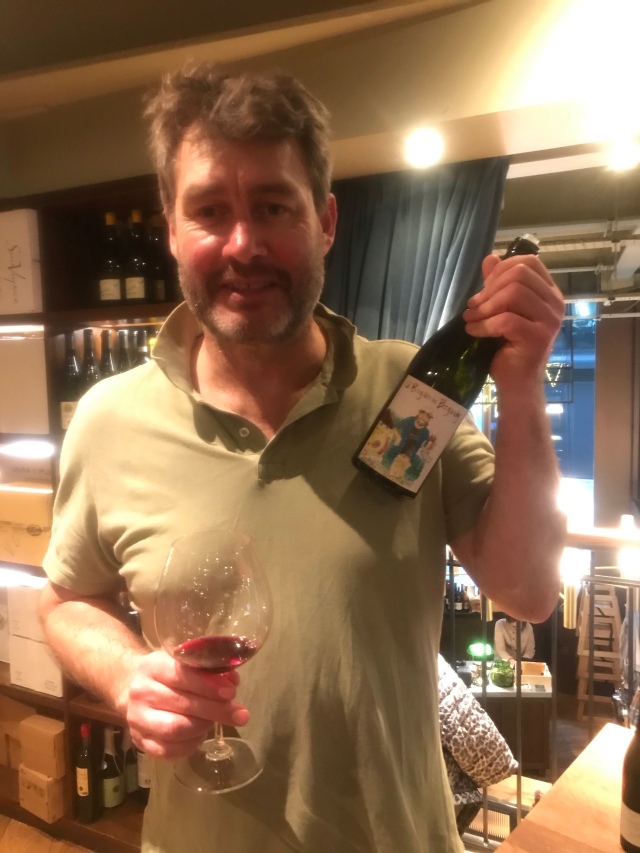
We’ll begin with the pair of wines Mark has called A Bogan in Bogandy. The white is a Vin de France, blending Chardonnay and Aligoté, the red is AOP Coteaux Bourguignons with Gamay and Pinot Noir. Both are fun wines which retail at around £15-£17/bottle, which provides good value. As Mark says, he wants all his bottles to be of a certain quality, but for a fun pair of wines these hit the mark. It was my first taste of the Bogans, though I did spot a 2017 “Bogan Goes Walkabout” on the shelf at Vinoteca, a Vin de France blend of Syrah and Grenache, I think.
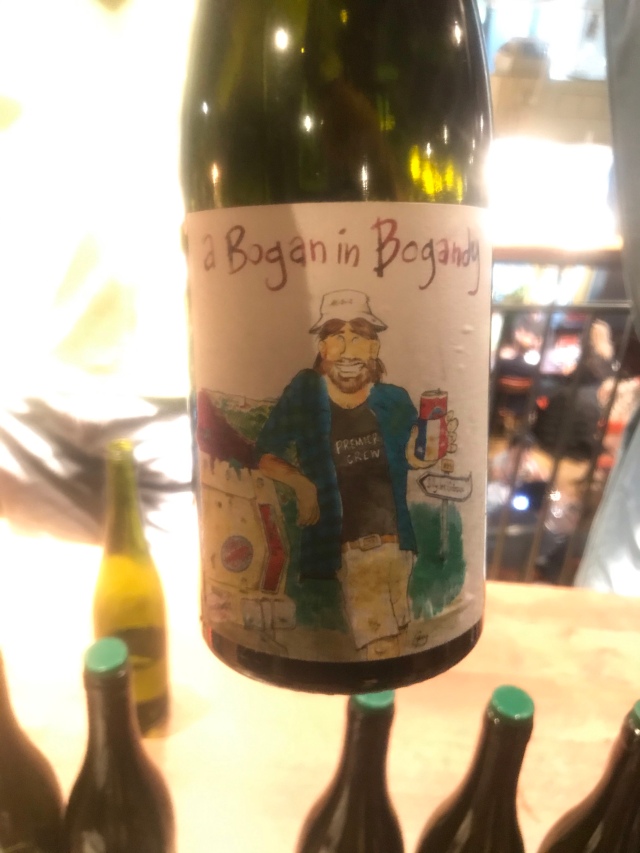
Mark’s Aligoté is always very popular, and the 2018 more so than ever, possibly on account of the extra ripeness and toned down acids. It comes in at 12.5% abv and both smells and tastes of grape juice. The Côte d’Or kicks off with Saint-Romain, a fresh wine of the hills, before we move down to Chassagne-Montrachet, a wine with perhaps a bit more of a bite, and fruit, whilst retaining freshness. Mark has previously avoided Meursault, but his new Meursault Sous la Velle (from a site close to the town) does not display the traits he seems to dislike about this appellation. It’s very fresh, especially for the vintage, but it does have an underlying buttery essence. I really like it. Chassagne-Montrachet 1er Cru Le Maltroye is potentially a step up in class, very much greengage/reine-claude with mineral texture.
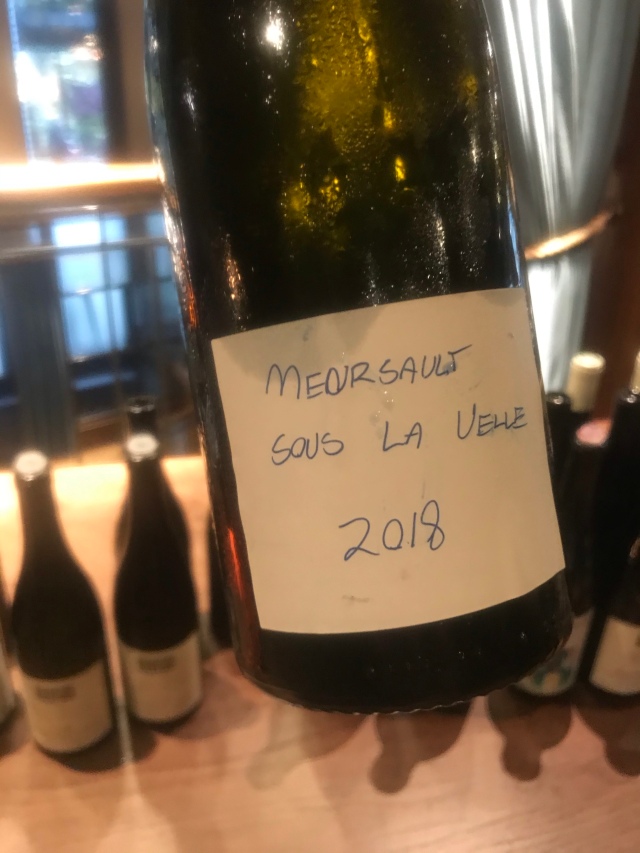
Last of the whites to mention is Mark Haisma’s Saint-Peray 2018. This once derided and unsung appellation of the Northern Rhône is now fashionable once more. I say “once more” because one particular wine merchant never fails to remind its customers that Saint-Peray, albeit in its now rarer sparkling form, was Richard Wagner’s favourite “tipple”. Mark sticks to the still version of this Marsanne-Roussanne blend, giving textured stone fruit and a little oily mouthfeel in 2018. I’d say more phat (ie gratifying) than fat.
After the Bogan red (mentioned previously) we moved up a step to Mark’s Bourgogne Pinot Noir which has just a touch more presence. Of the red village wines, Volnay is dark and leggy but the bouquet is nicely floral. Gevrey had been cooled down in an ice bucket but was also quite scented on warming. It has a bit of power, and of the two, for me, the most impressive.
Pommard 1er Cru Clos des Arvelets, presumably somewhere in the Arvelets vineyard west of the village, has big fruit but quite a lot of tannin as well right now. Morey-St. Denis 1er Cru Les Chaffots is a smallish lieu-dit bordering Clos St. Denis. This had also been chilled but seemed to me quite elegant. Echézeaux stands proud with a deep, resonant, nose but closed on the palate, tannic. It has a lot to give, but not right now.
As always, we end with a sip of Mark’s superb Cornas, which is usually capable of longevity but not always given the opportunity. It’s almost a shock moving over to Syrah. There’s depth, from violets at the top down to a deep bass note. Sandwiched between is good fruit, tannin and some savouriness, all stored away. Whether you could approach it after ten years or five I’m not really sure. If I’ve ever drunk one before a decade old, I don’t remember it.
It is always said that you should follow the producer, not the vintage. That comment is usually aimed at poor vintages, the cold and the wet. But it applies to hot vintages too. All three of these micro-negoces have dealt with 2018 in slightly different ways. I’m not prepared to say that the wines of one are better than the others, but I think they have all done remarkably well in this vintage. I naturally preferred some wines to others, but I cannot say that any showed signs of the most frequent criticisms being levelled at 2018 as a vintage. Generalisations are rarely accurate in wine, and never in Burgundy.
JEREMY RECCHIONE
Jérémy and his wife were not in London this year but Mark had lined up half a dozen of their tiny output on the table next to his. Many of you will know that this small artisan producer makes some very finely crafted wines, which would certainly be better known if he made more of it. Most of these wines consist of just one or two barrels, so perhaps fewer than 400 bottles in some cases.
We began with what is pleasingly now the obligatory bottle of Burgundy’s once derided variety, Aligoté. This is in a rounder style and if I would not rate it as comparable to the others already tasted, that is in no way a criticism. It’s a good pointer to the quality here. Bourgogne Chardonnay 2018 is approachable and juicy. I didn’t see prices for the Recchione wines, but if reasonable I’d be happy buying this for ordinary drinking.
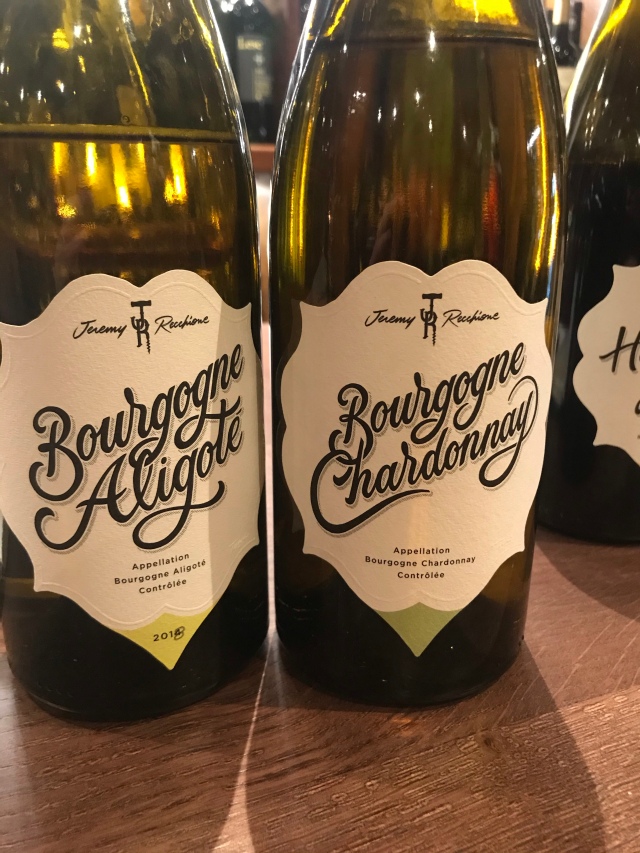
There’s been a lot of talk, positive I would say, about some of the wines from the Hautes Côtes in this vintage. Here we had a very nice Hautes Côtes de Nuits, with just the right degree of plump fresh Pinot fruit and 12.5% abv. It may have been my favourite out of the six wines shown. I also liked the slightly fatter Côtes de Nuits, but from the back label this bottle turned out to be a 2017.
The last two wines were from fruit sourced close to Jérémy’s home turf towards the northern end of the Côtes de Nuits. Fixin, generally, has improved beyond recognition in the past decade or two, and the Recchione Fixin 2018 is fragrant with high-toned fruit, more so than many Fixin’s I taste. It has a notably savoury finish too. Gevrey-Chambertin seems a little less soft and needs more time. I found it a difficult wine to judge.
DAGON WINES (ROMANIA)
Somewhere along the line Dagon Clan became Dagon Wines, but then I’d not tasted any of their wines since early 2017. I don’t mean to be patronising to say that the wines have improved. They have certainly grown up. I remember their wines as great value drinking, but at this tasting there were some more serious wines as well.
In the easy drinking camp I probably most liked the 2019 rosé called Har. A blend of Cabernet Sauvignon and Syrah with a little skin contact and gentle pressing into stainless steel. Half sees malo and the result is zippy and just 12.5% abv. I also like the entry level white, Cleştar (2018) which has a smooth finish and a bite. Aromatic.
Clearstone 2018 is a big step up, the best white I’ve tasted from these guys so far. It’s the wine which used to be called “Clar”. It is 100% varietal Feteasca Alba, fermented in wood and left to sit on fine lees for six months. It’s both fresh and buttery with a lemon citrus nose. Someone told them that Feteasca Alba is “Romania’s Chardonnay”. I can see that, but this has a little touch of Semillon character as well. I would certainly buy this wine if I see it on a shelf.
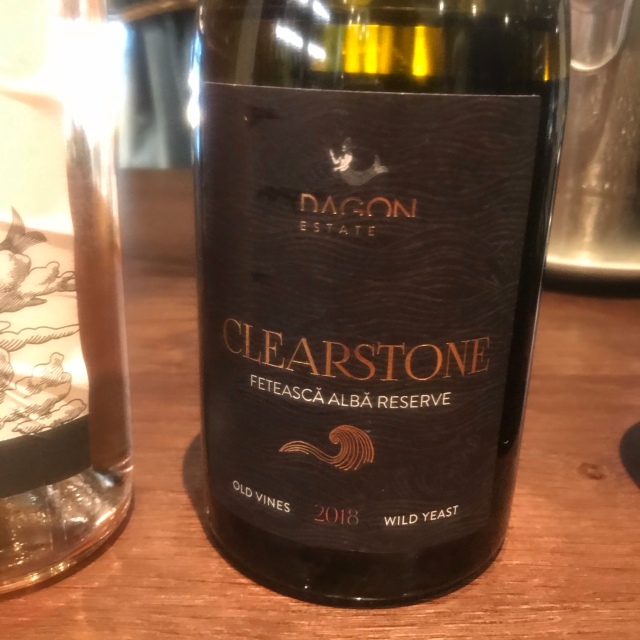
There are two wines called “Jar”. Jar 2018 blends 60% Feteasca Negra with 40% Pinot Noir. These varieties go well together. With 20% new oak, hopefully the limit, the bright fruit reminds me a little of a rare good Dôle from the Swiss Valais. Smooth fruit, but a grippy finish. I prefer it to Jar SR, which blends Feteasca Negra with Cabernet Sauvignon and Merlot.
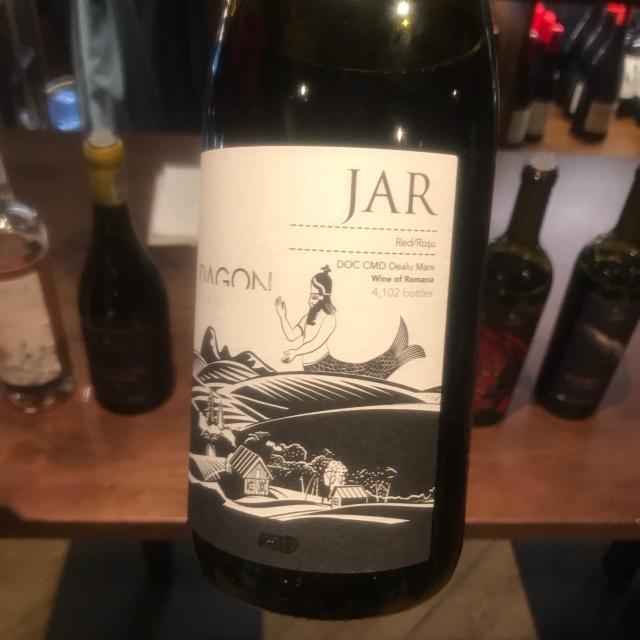
Gotmerlot 2018 is a wine from a new vineyard and just 367 bottles were made. 75% of the blend is Merlot aged in oak for ten months, at which point 25% Feteasca Negra is added. The colour is deep and there’s an attractive scent of dark fruits. The Feteasca gives a bramble freshness to the rounder Merlot. I reckon it needs five years to fulfil its potential.
The final wine on show was Sandridge 2018. Right in the middle of a vineyard there is a three hectare plot of Feteasca Negra, of which one hectare is on a sandy ridge. That hectare of fruit is harvested separately and fermented in steel tank before seeing three months in oak. Dagon made a single barrel in 2016, and none in 2017, so this 2018 is the second vintage and there are three barrels. This is in some ways the most interesting venture for Dagon because the wine really seems expressive of terroir. This will also benefit from some years in bottle, though at a guess people are likely to buy these and drink them. It will still give much pleasure.
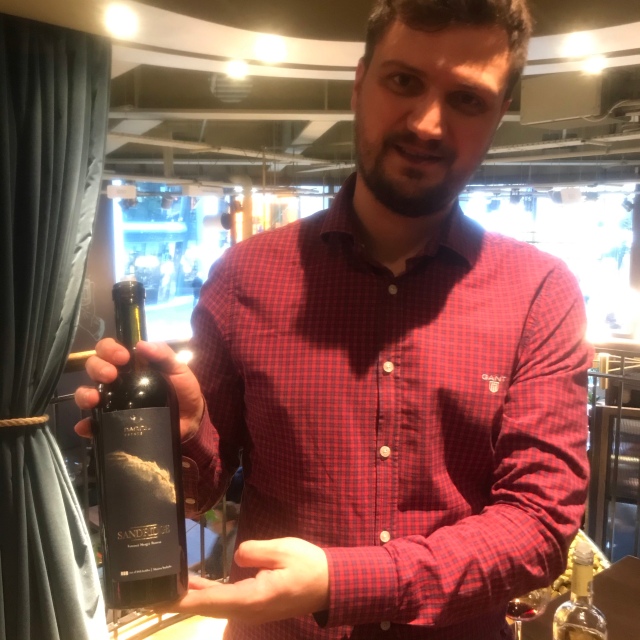
I sometimes feel that Dagon Wines get lost amid all these Burgundies, and I have to ask whether a lot of the city folks and burgophiles who buy from Mark Haisma et al are in the market for Romanian wine? That said, this is a good showcase for them and I hope trade buyers grab a taste. I’d stock them, for sure, if I owned a wine shop. Once hand sold they would go really well, of course for the novelty of their location but more for their quality. I’ve long said that Romania is brimming with untapped wine potential beyond the co-operative and factory production, and Dagon Wines is a beacon.
Some Conclusions
Going back to the 2018 vintage in Burgundy, I have increasingly read horror stories from other tastings. It’s as if I had been tasting a different vintage here. The keys to making good wine in 2018 must be managing ripeness and tannins. For negociants who supposedly have less control over picking dates, these folks have done very well. I suspect nothing was left too long on the vine.
I’ve read more criticism of harsh tannins than anything else. Someone pointed out, correctly, that Haisma, Eyre and Nielsen used mostly whole bunches, ripe stalks adding freshness. Stalks can, of course, lower acidities, but they can add brightness and freshness, as well (some argue) as soaking up a little alcohol. I don’t know what other producers did, but the only wines I found overtly tannic were wines where tannin would be somewhat bigger anyway. For example Echézeaux (Corton can be an exception and look how Jane added Renardes fruit from higher on the slope to boost the aromatics) is always going to have more structure, and Pommard has long had a reputation for tannin, even if it does not habitually show it in every vintage.
Over all, the wines on show on Tuesday were balanced. The whites are mostly fresh and have a prospect of drinking at three to five years, as a very broad generalisation. The reds are stylistically varied. Money aside, I would buy these 2018s, though I’d not be inclined to go long. They will in most cases drink earlier than some other vintages, but that’s no bad thing.
Actually, not putting money aside, Burgundy is getting pretty expensive. The producers have to cover costs and make a living. There is undoubtedly greed in the region, though I’m positive there were no greedy people in the room at Vinoteca. The problem, looking ahead, comes with 2019. Another warm vintage but with a smaller crop for most. Some suggest it will be harder to sell for the negociant, but the price pressure on grapes will certainly be significant. I would hope that there is enough loyalty to help these people keep making fresh and exciting wines. When it comes to vintage one can ditch generalisations and reach for the eternal truth in Burgundy, as anywhere – producer is key.









